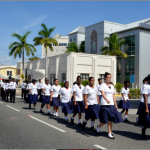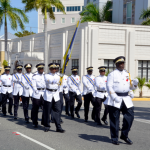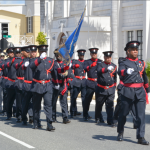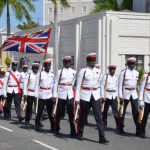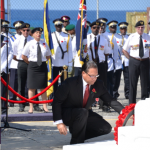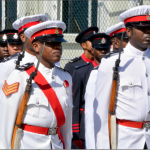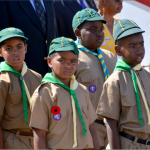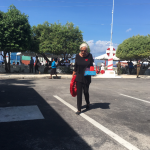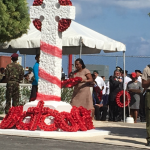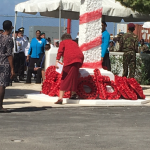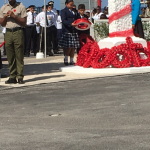Cayman Islands remembers
Last Sunday (13) the Cayman Islands remembered the lives lost in World Wars I and II and of lives lost at sea. Services in memory of these loved ones were held in Grand Cayman and Cayman Brac, both commencing at 10:45am.
I was at the one on Grand Cayman at the Cenotaph Elmslie Memorial Church on the waterfront in George Town.
It was a perfect day and there was a good crowd of people although not as many as on some other years I have witnessed. A huge contrast to the previous day’s Pirates Week celebrations.
This is a day no one should forget but sadly as time goes by the ones of us that can remember are becoming less therefore it is important that everyone should bring their children out and show them the brutality of war. The lives given up so our future generations can be free.
The service this Sunday morning moved me to tears again and I have to compliment the organisers for a perfect and dignified ceremony.
The Parade included The Royal Cayman Islands Police (RCIPS) Band and a Detachment of RCIPS officers, Veterans Association, Fire Service, HM Prison Service, Girls. Brigade, Scouts, Cub Scouts, Cadet Corp and Lions Clubs.
Persons participating in the ceremony were Captain Dale Banks, Rev Dr. Derik Davidson, Pr. Torrence Bob, Rev Godfrey Meghoo, and Rev Stanwyck Myles.
Her Excellency the Governor, Helen Kilpatrick, gave The Bidding and laid a wreath as did the Premier Alden McLaughlin, Leader of the Opposition McKeeva Bush, the Cayman Islands Seafarer’s Association and various churches and members of the public that included our own Publisher Joan Wilson. Her wreath was in memory of her late father Mj. Joseph Watler who was Captain of the Home Guard during WWII and her brother Ladner Watler who died at sea from a German torpedo.
During the ceremony the moving hymn “O God Our Help in Ages Past” was sung by everyone in attendance.
The National Anthem “God Save the Queen” was also sung.
The Paraders then marched off as they had arrived, with various salutes being taken.
“In Flanders Field” By Lt. Colonel John McCrae
In Flanders fields the poppies blow
Between the crosses, row on row,
That mark our place; and in the sky
The larks, still bravely singing, fly
Scarce heard amid the guns below.
We are the Dead. Short days ago
We lived, felt dawn, saw sunset glow,
Loved and were loved, and now we lie
In Flanders fields.
Take up our quarrel with the foe:
To you from failing hands we throw
The torch; be yours to hold it high.
If ye break faith with us who die
We shall not sleep, though poppies grow
In Flanders fields.
From Wikipedia:
Remembrance poppies
The red poppies that McCrae referred to had been associated with war since the Napoleonic Wars when a writer of that time first noted how the poppies grew over the graves of soldiers. The damage done to the landscape in Flanders during the battle greatly increased the lime content in the surface soil, leaving the poppy as one of the few plants able to grow in the region.
Inspired by “In Flanders Fields”, American professor Moina Michael resolved at the war’s conclusion in 1918 to wear a red poppy year-round to honour the soldiers who had died in the war. She also wrote a poem in response called “We Shall Keep the Faith”. She distributed silk poppies to her peers and campaigned to have them adopted as an official symbol of remembrance by the American Legion. Madame E. Guérin attended the 1920 convention where the Legion supported Michael’s proposal and was herself inspired to sell poppies in her native France to raise money for the war’s orphans. In 1921, Guérin sent poppy sellers to London ahead of Armistice Day, attracting the attention of Field Marshal Douglas Haig. A co-founder of The Royal British Legion, Haig supported and encouraged the sale. The practice quickly spread throughout the British Empire. The wearing of poppies in the days leading up to Remembrance Day remains popular in many areas of the Commonwealth of Nations, particularly Great Britain, Canada, and South Africa, and in the days leading up to ANZAC Day in Australia and New Zealand.
IMAGES:
Karen Coles
Georgina Wilcox


